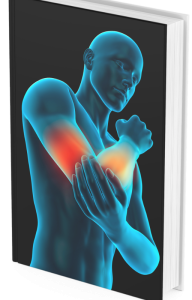
The SacroIliac Joint. What can help?
The SacroIliac joint is the joint that attaches the spine via the Sacrum to the pelvis. It is a joint with cartilage much in the same way as the hip or knee.
The Sacroiliac joint also demonstrates movement in all directions, more in women than men. The Sacroiliac joint and its surrounding areas has a lot of nerves, which help transmit pain.
The movement in the Sacroiliac joint is controversial as many studies show it to be fused particularly men by the time of 40 years old, however this does not preclude this joint at times being a soruce of pain.
Function of the Sacroiliac Joint
Its main function is to provide stability, motion and to also provide protection of internal organs and structures.
It is a rather immovable joint. In women its mobility increases during pregnancy to allow the passage of a baby, which helps open up the pelvis during childbirth.
Prevalence of Sacroiliac Pain
There is a 13-30% incidence of SacroIliac pain in patients with low back pain. The SacroIliac joint can also become diseased in a inflammatory condition called sacroiliitis. This can be the start of an inflammatory disease called Ankylosing Spondylitis where the ligaments around the spine calcify and eventually fuse.
The other interesting thing to note is that 43% of pain in the SacroIliac joint comes about after spinal fusion. So the Sacroiliac joint is a significant source of pain after lumbar fusion.
This is thought to come about because sometimes the diagnosis of Sacroiliac joint is missed! Furthermore after a fusion more strain is put opon the Sacroiliac Joint which then becomes symptomatic.
In terms of health burden SacroIliac pain is roughly equivalent to hip Osteoarthritis, Spinal Stenosis, Knee Osteoarthrits and Chronic depression
Sacroiliac Joint Referral Patterns
SacroIliac pain can frequently refer into the groin, but also to the side of the leg, and occasionally down the back of the leg.
This sometimes makes diagnosing Sacroiliac patterns difficult as low back pain and leg pain often overlap.
There are specific Autoimmune conditions such as Ankylosing Spondylitis where the Sacroiliac joints are the first area to manifest its symptoms a condition known as Sacroileitis.
However with a good Osteopathic examination it is relatively straightforward to diagnose whether pain is coming from this joint.
Treatment of The Sacroiliac Region
Once a diagnosis of Sacroiliac dysfunction is made, then treatment can be initiated.
Osteopathy is the number one choice where stretches are made to the joint, which helps return it to normal function which in turns helps reduce any inflammatory changes.
The joint is large and is usually quite stiff and sometimes difficult on which to use manipulative treatment.
In such a case Acupuncture is used as this has the advantage of not having to use any form of manipulative treatment, helps stimulate blood flow and is effective at reducing pain in the area.





